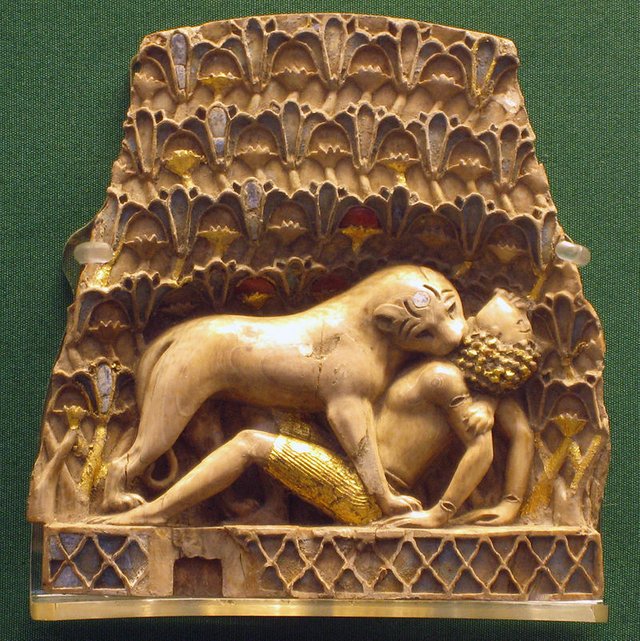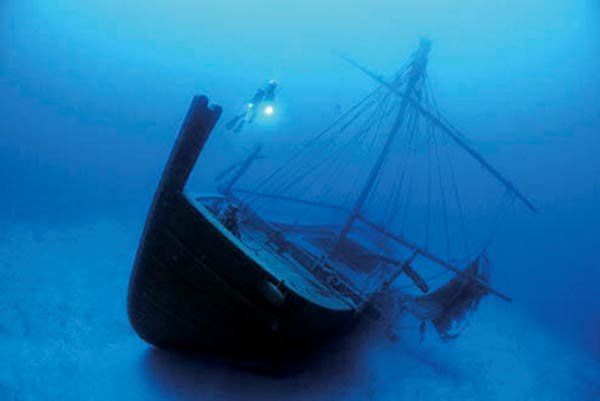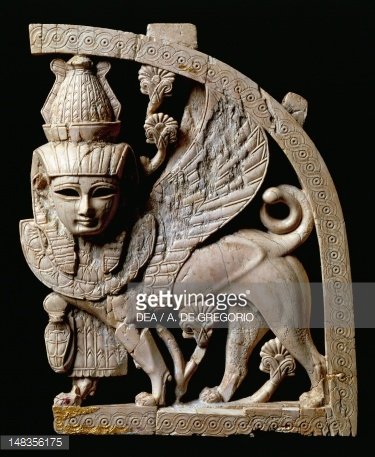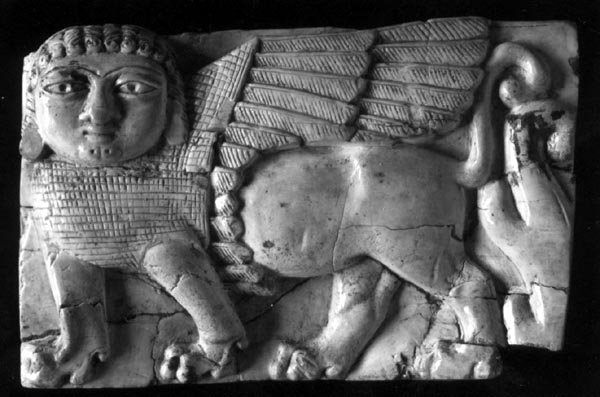Ivory Part 1: The Phoenicians
I have tentatively titled this post “Ivory Part 1” because I hope to begin a series of miscellaneous histories related to the ivory trade. Note that I have no intention of being either chronological or holistic; here the Phoenicians are neither the start of the trade nor unique among contemporaries.

The far reaching trade of Iron Age Phoenicia, a collection of city states centered in present-day Lebanon, is well known. Here I review the ivory subset of that trade.
Sources
As ivory was harvested from elephants and hippopotami, the Phoenicians obtained the raw material from regions in Africa and Asia. Specifically ivory came from Syria, North Africa (with later shifts toward the west), and India and East Africa via the Red Sea and Egypt.

The 14th century BC Uluburun shipwreck provides early, substantial evidence of the ivory trade. Although the wreck predates the Phoenicians, the ship’s Syro-Canaanite origins link it to the Phoenicians. The cargo included one full and one partial elephant tusk and thirteen hippopotamus teeth. Additionally there were several crafted ivories, such as a trumpet carved from a hippopotamus incisor. The source of these tusks and teeth has not been pinpointed, but can be narrowed to Libya, Sudan, Egypt, Syria and Palestine.
The Phoenicians, however, had little ability to exploit Syrian elephants and hippopotami in Syria-Palestine. By the 7th century BC the Syrian elephant population had been eliminated, while the hippopotamus followed suit (a reduced population may have survived until the 4th century BC).
In one view, these exterminations motivated the Phoenicians to seek ivory farther afield. 1 Kings 10 relates the voyages of Tyrian king Hiram I’s (r. c. 980—947 BC) fleets to Ophir and Tarshish, returning with “gold, silver, ivory, apes, and peacocks.” There are diverse theories on the locations of both of these regions. Ophir is often placed in India or the Red Sea. At the least, Phoenicia conducted some trade with western Arabia, obtaining ivory from East Africa and India. However, India had diminished as a source of ivory from the mid-2nd millennium BC.

Tarshish was likely located in the western Mediterranean, perhaps corresponding with Tartessos in southern Spain. This interpretation is backed by the late 7th/early 6th century BC Bajo de la Campana shipwreck off the southeastern coast of Spain. Excavations of the wreck yielded over fifty elephant tusks. The geometry of these tusks suggests that they were harvested from African forest elephants in western North Africa. Several of these tusks were inscribed with a name and dedication. The inscribed tusks were probably votive offerings and were not intended for trade. Carved ivory dagger handles and an ivory base for an ostrich egg were also recovered. The ship’s immediate destination was likely La Fontenta along the coast to the north. Here some of these ivories could have been employed in trade with elites.
Carvings


After two or three centuries of decline, Syrian and Phoenician traditions of ivory carving revived by the 9th century BC. While the Syrian school was soon pressed by the loss of the Syrian elephant, the Phoenicians, with their expanded trade networks, maintained their ivory production into the Achaemenid period. The Phoenicia style is distinct for its Egyptian themes and relative realism and grace. Compare, for example, the two ivory sphinxes from Nimrud above. The Phoenician type, on the top, has elegantly arched wings, an Egyptian headdress, and a slender frame. By contrast, the Syrian ivory, on the bottom, is more concerned with bulk and power.
The Phoenicia style is distinct for its Egyptian themes and relative realism and grace. Compare, for example, the two ivory sphinxes from Nimrud above. The Phoenician type, on the left, has elegantly arched wings, an Egyptian headdress, and a slender frame. By contrast, the Syrian ivory, on the right, is more concerned with bulk and power.
The ivories excavated at Nimrud were collected by the Assyrians in the form of tribute from the Phoenicians and as loot during their Near Eastern conquests. This tribute, which included raw and crafted ivory, was solidified under the Assyrian king Ashurnasirpal II (r. 883—859 BC). In a more consensual exchange, raw and worked ivory was also sent to Israel and Judah, as evidenced by the 8th century BC Samaria Ivories. To the west, sites in Cyprus, Greece, North Africa, Etruria, and Spain have also yielded Phoenician ivories.
nice post, very interesting. looking forward to future post.
Congratulations @mand! You have completed some achievement on Steemit and have been rewarded with new badge(s) :
Click on any badge to view your own Board of Honor on SteemitBoard.
For more information about SteemitBoard, click here
If you no longer want to receive notifications, reply to this comment with the word
STOPCongratulations @mand! You have received a personal award!
Click on the badge to view your Board of Honor.
Do not miss the last post from @steemitboard!
Participate in the SteemitBoard World Cup Contest!
Collect World Cup badges and win free SBD
Support the Gold Sponsors of the contest: @good-karma and @lukestokes
Congratulations @mand! You received a personal award!
You can view your badges on your Steem Board and compare to others on the Steem Ranking
Vote for @Steemitboard as a witness to get one more award and increased upvotes!
Write good